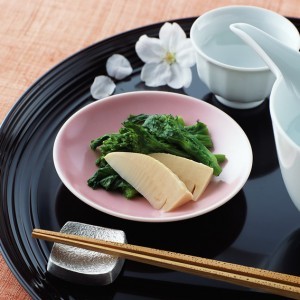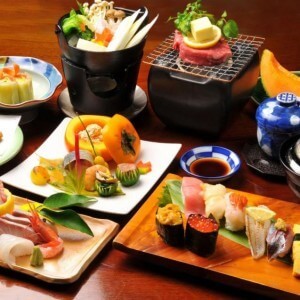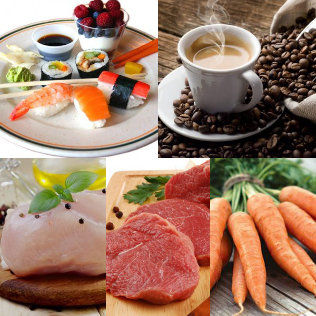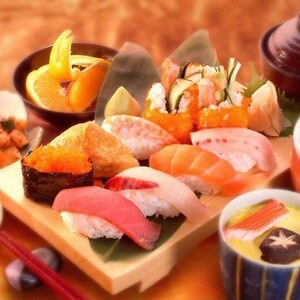
The Japanese diet is a low-carbohydrate, low-calorie diet developed by Japanese nutritionists whose diet allows you to lose about 10 pounds in 2 weeks.
Being overweight today costs many people an incredibly fast lifestyle. We are in a hurry to live, in a hurry to work, in a hurry to eat. . . In addition, we often eat to flee and with what they say, God will send. And in the 21st century, God is increasingly sending us burgers, hot dogs, cheese burgers and soda. . . "What to do? Don’t spend expensive minutes on lunch at a restaurant or how? - Cook yourself in the kitchen when the business is "on fire"? Here they say that the whole successful world lives like this and nothing. "This excuse is used by a large number of people who lead an active lifestyle. When your favorite jeans don't fit, when you have to buy a longer belt, when between a seductive skirt that fits snugly at the waist and an ugly shapeless style with an elastic band, we choose the second, of course. time to come up with a new excuse. Well, in fact - it's all, of course, not the result of malnutrition, but simply . . . thick bone. Yes, yes, and nothing to do about it, thick bone - it's so, very deceptive. And once it starts to grow, everything can't be stopped.
Let us now turn our attention to Japan, a land of enormous potential, the highest level of technological development and an incredible pace of life. It seems that if someone does not have time to stop for the right meals, it is just like the Japanese. But, surprisingly, you rarely find a "thick bone" among the Japanese population. . . What, then, is the secret?
The thing is, Japanese snacks are low-calorie foods, rich in protein, almost fat-free and "bad" carbohydrates. And the main principle of the Eastern food tradition is moderation. That is why Japanese cuisine is called one of the healthiest foods in the body.
Given the peculiarities of Eastern dietary traditions, a balanced and highly effective diet called Japanese has been developed. In fact, this diet has virtually no traditional Japanese cuisine on its menu. But there is a combination of multi-protein, fat and carbohydrates in the amount that the body needs to get everything it needs, without causing the bone to "thicken". There are several diet options, but the most popular is the Japanese diet without salt for 14 days. Two weeks of proper "Japanese" diet will help the "thick bones" to lose more weight in excess of 10 kilograms, and effortlessly maintain the result for several years.
The essence of the Japanese diet
Those who decide to go Japanese will have to be patient and deviate from their usual diet for two weeks. Diet may seem like a daunting challenge to many, but the effect won't be long in coming. But the surprising results will remain for several years. Only a two-week regimen for a "Japanese" - and ten kilograms (sometimes even more - it all depends on the original weight), as if.
So what's the main secret? Why is a Japanese diet a week better than other diet systems for weight loss? In what wonderful way does it help to lose weight even for those who have tried many other diets without success?
It's all about carefully selected products for the diet menu - they are combined to speed up the metabolic process as much as possible. That is why it is so important to strictly follow all the instructions, eat only what is indicated, and not "improve" other products of it, even if at first glance it seems that they are completely interchangeable. It is also not recommended to change the menu days.
For many women, her level of "hunger" is important when choosing a diet, because not everyone is able to fight the samurai's willpower against their desires, especially the old instinct of all living beings - hunger. Therefore, the fact that the two-week Japanese diet without salt is not a "hungry" diet. With this in mind, you will not need to chew one cabbage for weeks and drink low-fat kefir, cursing yourself, your excess weight and those who invented a diet. Japanese women's menu contains a place for interesting and delicious recipes. This diet will focus on those whose breakfast usually consists only of coffee. And meat and fish lovers will not see anything difficult in it. For them, it is the best diet.
The essence of the Japanese diet is easy to explain in just two words - slowness and efficiency.
"Japanese" is a low-calorie protein and high-fiber diet. Carbohydrates, the amount of which in the daily diet is reduced to a minimum, make you lose weight faster - if you need energy, the body begins to process fat reserves in joules. But it's important to remember something else: the Japanese woman's diet will not allow you to saturate the body with the full spectrum of vitamins and minerals. Therefore, it is strictly forbidden to follow a diet longer than prescribed (up to 14 days) in order not to complete a course of weight loss in a hospital bed.
And if you want to feel like a real Japanese, Europeans can try Japanese sticks instead of traditional forks and spoons. They will not only convey the fabulous spirit of the rising sun, but also teach the food and small pieces. By the way, many diet supporters know this trick. A leisurely meal can disappoint your body and make you feel full, even after very small meals. It should actually be taught to the Japanese diet for weight loss.

Japanese Diet Types
The huge popularity of the Japanese diet among women around the world has led to a number of opportunities for this weight loss system. In particular, there are some dietary options:
- Japanese diet without salt for 7 days;
- 13 days (most commonly used diet);
- 14 days (different from the previous 13-day diet with only one day);
- Japanese with green tea;
- Naomi Moriah's diet.
Proponents of each of these methods call their favorite version a "real" Japanese. In addition, many mines have already been broken in dietary disputes. Some say it was invented by Japanese nutritionists, others claim that the system has nothing to do with the East. Whoever is the author of the Japanese diet, the main thing is that it works. And its effectiveness has been experienced by millions of donuts around the world.
The Japanese diet weight loss menu consists of low-calorie, low-carbohydrate, low-salt foods, spices, sugar and sweet pastries, as well as alcohol, so the diet is considered strict. It promotes the rapid breakdown of fat into body fat, as the body finds itself in a stressful situation and is forced to burn its own fat and calories.
Diet menu for 7 days
The 7-day Japanese diet is a light version of the traditional Japanese diet, but at the same time the 7-day diet is the basis of the whole diet.

Expected results: 3-5 kilograms left in the past.
Disadvantage: The longevity of the result is not guaranteed, as the body has not yet had time to adapt to the new metabolic system.
Day 1
Daily calorie content: 700 kcal.
Required products:
- black coffee;
- chicken eggs;
- fresh cabbage (Beijing cabbage / white cabbage);
- tomato juice (ideally freshly squeezed);
- Low fat fish.
Breakfast:
- black coffee - it is better to prefer espresso, but better to forget about sugar.
Lunch:
- boiled chicken eggs (possibly 2 pieces);
- "Japanese" salad - fresh cabbage and a little vegetable oil, no need to add salt;
- glass of tomato juice.
Dinner:
- steamed fish - ideal is hake, cod, pollox (no more than 200 grams per serving);
- Japanese salad.
Day 2
Daily diet calorie content: 1000 kcal.
Required products:
- coffee;
- Biscuits
- fish (fatty breeds);
- cabbage;
- vegetable oil;
- beef;
- kefir.
Breakfast:
- coffee;
- Biscuits - Take a small one that weighs about 30 grams.
Lunch:
- fried or stewed fish - for variety and additional use of fatty acids it is better to prefer catfish, salmon, Greenland halibut. Not more than 150 grams in total;
- "Japanese" salad.
Dinner:
- beef - boil about 200 grams. Consume without salt;
- kefir - you can skim, but not more than 200 grams per glass.
Day 3
Daily calorie content: 1000 kcal.
Required products:
- coffee;
- zucchini / parsnips;
- apple;
- chicken eggs;
- veal;
- cabbage;
- Vegetable oil.
Breakfast:
- black coffee - don't forget the sugar moratorium.
Lunch:
- zucchini (large enough) or parsnip roots (also large) - brown in vegetable oil (do not use flour or dough for frying, salt is also forbidden);
- apple - do not be passionate, it is recommended to limit yourself to only one fruit.
Dinner:
- boiled chicken eggs - 2 pieces;
- boiled veal - limit your appetite to 200 grams per piece prepared without salt;
- "Japanese" salad.
Day 4
Daily diet calorie content: 1000 kcal.
Required products:
- coffee;
- carrot;
- hard cheese;
- chicken ola;
- apples.
Breakfast:
- black coffee without sugar.
Lunch:
- carrots - boil, it is allowed to take 3 larger roots;
- some cheeses - choose one of the hard varieties, limit yourself to 20 grams;
- Raw chicken egg - one is enough.
All 4-day lunch ingredients, if desired, can be combined in one dish - a salad.
Dinner:
- Apples - Multiple fruits are allowed.
At this point, the feeling of hunger will not be as strong as before. Perfection occurs after small portions of food.
Day 5
Daily calorie content: 800-1000 kcal.
Required products:
- carrots;
- lemon juice;
- sea fish;
- juice;
- fruits.
Breakfast:
- Carrots and lemon juice - grate vegetables and add juice to spices. You cannot add sugar. Also excluded from breakfast and coffee on this day.
Lunch:
- fried fish - takes about 350-400 grams, variety - any from the sea;
- tomato juice - it would be better to use fresh, home-made diet. Volume - not more than 200 grams.
Dinner:
- Fruit - but under no circumstances should you use, especially at bedtime, any variety of grapes or bananas. They will erase all the results achieved so far.
Day 6
Calories in the daily diet: 900-1100 kcal.
Required products:
- coffee;
- chicken fillet;
- raw cabbage;
- carrots;
- vegetable oil;
- chicken eggs.
Breakfast:
- black coffee without sugar.
Lunch:
- chicken fillet - limit the portion to 500 g, take the meat without skin. Boil in water without adding salt;
- Salad - On this day, traditional "Japanese" salads can be enhanced by adding grated raw carrots.
Dinner:
- chicken eggs - boil 2 pieces;
- Carrots (you can take large) - grate raw vegetables, season the salad with a small amount of vegetable oil (maybe olive oil).
Day 7
Daily calorie content: 700-800 kcal.
Required products:
- tea;
- fruits;
- beef;
- olas;
- cabbage;
- Vegetable oil.
Breakfast:
- tea - it is recommended to choose good green varieties rich in useful antioxidants.
Lunch:
- Beef - Boil a piece of about 200 grams. Do not use salt or other spices during cooking;
- Fruit - on the last day of the diet you can treat yourself to a lunch dessert. But do not forget about the ban on bananas and grapes.
Dinner:
On this dinner day, you can choose any dinner variant from the previous days as a prize for endurance. For example, choose a version of beef, egg and cabbage salad that is flavored with olive oil.
This will interrupt the diet of some. For those who have opted for longer versions of Japanese women, Day 7 is just the working equator to change themselves.
For those who aren't used to eating calories, at first Japanese may seem like a pretty tough weight loss option. But the discomfort will be noticeable only in the first days - then the body adapts to small portions of food, begins to eat faster. After 5 days after a new diet in the body, the first stage of restructuring begins to accelerate metabolism - the main goal of any diet is to lose excess weight, remove excess fluid, disappear edema. To achieve the best results while following a diet, you can take an anti-cellulite massage course.
Japanese diet for 13 days
The most popular is the 13-day Japanese diet. This version is considered a complete weight loss course.
Expected results. If you are ashamed to follow all the recipes, then at the end of the 13-day day you will be missing about 10 kilograms and about 30 cm in volume (sometimes more).
How is this different from the 7-day option? In fact, it is a continuation of the light version of the "Japanese woman". That is, you will have to experience 7 days of "Japanese" life, and on day 8, start all over again, repeating the days from the first to the sixth.

Japanese diet for 14 days
The 14-day version of the Japanese diet was also based on a 7-day menu, albeit with some nuances. The main difference from the previous two options is that in the first week you have to strictly follow the 7-day menu, and in the second - eat according to the same program, but in the opposite order. This means that the diet of the eighth day will correspond to the diet of the last day of 7 days, the menu of the 6th day on the ninth day, and the menu of the 5th day on the tenth day. . . And according to this principle continue until the end of the second day of the week. As a result, finish the last 14 days of the diet with the "Japanese woman" 7-day version of the first day of the diet.
From day 8 of the diet, the detoxification process is activated in the body, and based on the principle of a salt-free diet, excess fluid is removed at the intercellular level, completely eliminating the edema. It is important for the body to get used to the new metabolic rate in the second week of the diet. As a result, even after switching to a normal diet (usually - this does not mean that the next sleep should eat again in the pools, but you also do not have to live in starvation mode) the body will not gain weight, on the contrary - fat will be burned as fast as during the diet. This wonderful effect will last for about 2 years. But provided that the diet was maintained properly. Those who have already experienced the work of "Japanese women" claim that a year after the end of the diet, the weight continues to adjust down. If you repeat the "Japanese woman" again (but not earlier than six months after the first course), then during the year it is really possible to get rid of 20 kg of excess weight practically effortlessly.
Diet and salt
Have you ever wondered why salt is taboo on almost every more or less effective diet? The thing is, according to experts,
1 gram of salt in the body retains a whole liter of fluid.
And it's nothing more than another pound of excess weight. In addition to false excess weight, as salt is accumulated not by the fat layer but by fluid stagnation, excessive salt consumption causes other problems for humans. Even a few days of meals without salt can lower blood cholesterol levels and improve the condition of blood vessels.
Of course, it is not possible to completely exclude salt from consumption, and it cannot be done. But the "Japanese woman" menu includes products that already contain a certain amount of salt - enough for the normal functioning of organs. In particular, organic salt is found in some vegetables, fish, meat. During the diet it is not possible to eat canned vegetables, smoked meat, semi-finished products - all of them contain quite a large amount of table salt.
Green tea
In addition to the classic version of the Japanese diet, the menu also has the option of using green tea instead of coffee. Many nutritionists believe that this "Japanese woman" variation is more favorable for the body.
Given that the Japanese diet is based on a protein diet, it is important that green tea (especially the Japanese form) contains huge protein reserves, and in terms of nutritional value, this drink is not inferior to legumes.
The second plus in favor of green tea is the presence of antioxidants that protect the body from toxins and promote the elimination of toxins.
Third, and perhaps most important for those who lose weight, green tea's unique chemical composition helps speed up your metabolism by 4 percent (60 calories are burned every day more than without green tea).
The Japanese green tea diet lasts 2 weeks. The components are practically the same as in the classic "Japanese" version, although there are still some great features.

Detailed Japanese Green Tea Diet Menu
Day 1 / Day 14
Breakfast:
- green tea - a glass;
- non-fat cottage cheese - 150 g.
Lunch:
- cabbage stewed with butter - 300 g;
- boiled chicken eggs - 2 pcs.
- glass of fresh apples.
Dinner:
- Vegetables in salads or steamed;
- boiled or steamed fish - 200 g.
Day 2 / Day 13
Breakfast:
- green tea - a glass;
- hard cheese - 2 pieces;
- toast or diet cookies.
Lunch:
- Cooked or uncooked cabbage seasoned with oil;
- cooked fish;
- green tea - a glass.
Dinner:
- vegetable salad
- ;
- boiled veal - 300 g;
- boiled chicken egg - 2 pcs. ;
- Japanese green tea - a glass.
Day 3 / Day 12
Breakfast:
- Japanese green tea - a glass;
- nutrition cookies.
Lunch:
- boiled zucchini / cauliflower;
- apple - 1 piece.
- green tea - a glass.
Dinner:
- yellow-green vegetable salad;
- cooked veal;
- boiled chicken eggs - 2 pcs.
Day 4 / Day 11
Breakfast:
- Japanese green tea - a glass;
- non-fat cottage cheese - 150 g.
Lunch:
- Raw grated carrots with olive oil;
- chicken ola;
- green tea without sugar.
Dinner:
- green tea;
- Fruits (not grapes and bananas).
Day 5 / Day 10
Breakfast:
- green tea - a glass;
- croutons with jam - 2 pcs.
Lunch:
- boiled fish - 200 g;
- tomato juice - a glass.
Dinner:
- green vegetable salad;
- hard cheese - 2 pieces;
- green tea - a glass.
Day 6 / Day 9
Breakfast:
- rye flour croutons - 2 pcs.
- Japanese green tea - a glass.
Lunch:
- raw cabbage / cooked with olive oil;
- cooked chicken without skin - 400 g;
- Japanese tea - a glass.
Dinner:
- Carrots (cooked / unprocessed);
- boiled eggs - 2 pcs.
- unsweetened green tea.
Day 7 / Day 8
Breakfast:
- Japanese tea - a glass;
- cheese (any of the hard varieties) - 2 small pieces.
Lunch:
- boiled veal - 200 g;
- cooked / steamed vegetables;
- green tea without a glass of sugar.
Dinner:
- fruits - anyone;
- Japanese green tea - a glass.
The effectiveness of this Japanese diet option is enhanced by adding a diet to green tea, and the variety and flavor of the menu makes it easy to endure a period of food restrictions. Repeat the diet - no earlier than a year later. And so it was achieved in two weeks, the results lasted longer, in the future it is recommended to follow a healthy lifestyle, eliminate tobacco and limit alcohol portions, as well as to follow a proper diet in everyday life.

Main dishes
Regardless of the Japanese diet you choose, any of them will have a traditional cabbage salad and boiled meat. These dishes can be prepared in different ways. But remember that they are part of the diet and the cooking process is slightly different from cooking. regular meals.
Making the right Japanese salad:
- Take raw or lightly cooked cabbage (common cabbage or Beijing cabbage).
- Finely chop.
- Gently squeeze out excess moisture.
- Season the prepared salad base with olive or sesame oil.
- Stir and bring to a boil.
Dietary cooked meat
- Prepare the meat. If it is chicken, remove the skin. Peel the veal or beef from the film.
- Rinse thoroughly with cold water.
- Put the meat in a saucepan, cover with very cold water.
- After boiling, drain the water, rinse the meat and, when refilled with water, put on fire.
- Boil until soft, without adding spices.
Tip: Add onions, small carrots and a little greens to the water to improve the taste during cooking. Many people are thinking about replacing beef in the Japanese diet. The menu allows the introduction of new veal, which is easier to digest, but with the same chemical composition as beef.
How were the products selected?
Almost all sources say that the list of foods allowed in the Japanese diet is special and should not be changed. So what is the secret to this particular diet?

Coffee. Many people start their day with this aromatic drink. A cup of black ground coffee is served as a traditional breakfast and Japanese diet.
What is its use?
Sugar-free black coffee, which has an invigorating effect, helps the body wake up faster and start the process of burning calories. And since the morning intake is not provided, the body begins to produce energy, burning its own reserves - subcutaneous fat.
You can diversify the taste of your morning drink by adding vanilla, dark chocolate or citrus fruits. Add additional ingredients in small doses.
Cabbage. This vegetable was not chosen at random for the diet. In addition, cabbage is one of the vegetables with the so-called "minus" caloric content (the body spends more energy on digestion than it receives).
What is its use?
Cabbage, white or Chinese cabbage, strengthens the walls of blood vessels, lowers cholesterol and cleanses the intestines. For people who are prone to bowel enlargement, it is better to boil the cabbage a little before use.
Olive oil. A teaspoon of oil added to salads normalizes metabolism, has a beneficial effect on the liver, kidneys and pancreas.
Olas. This product has good nutritional properties and is a great source of protein, fat and carbohydrates, as well as many vitamins and minerals.
Tomato juice. Nutritionists call it one of the healthiest. Tomatoes' unique chemical composition prevents cardiovascular and oncological diseases, speeds up metabolic processes in the body, improves mood and has a beneficial effect on the nervous system. It is best absorbed without added salt, which is especially important for a salt-free diet.
Fish. Known for its ability to rapidly excrete toxins and toxins. It is a valuable source of protein and amino acids. It affects the body as a means of preventing stroke.
Fruit. Generally, you should drastically reduce your carbohydrate intake during your diet. But it is completely undesirable to exclude from the diet - they are an important source of energy. The body receives the "right" carbohydrates along with the fruit. But it is better to exclude bananas and grapes from the diet, which contain a lot of sugar.

Naomi Moriah's Diet
It's hard not to believe in the effectiveness of the Japanese diet, especially for those who still decided to try it for themselves. But sooner or later, many people ask themselves: why is this diet called the "Japanese diet" when there is practically nothing on the menu? from the traditional dishes to the rising sun. But there is an explanation. According to one version of this original diet is the development of nutritionists of the Japanese clinic "Yaelo".
But there's another "Japanese" version created by merchant Naomi Moriyama - in response to Frenchwoman Mireile Guiliano, author of "Why French People Don't Fat. "In fact, according to research, the French are by no means the thinnest in the world. The lowest number of obese people live in Japan - only 3 percent, while in France donuts are about 11%, but in the United States - more than 32%. That's why Naomi has compiled the nutritional principles that are specific to her people and adapted them to her diet.
Rules of food from the rising sun Earth
Easterners eat nearly 100 different types of food a week, with a total caloric content more than a quarter less than, say, an American's weekly caloric intake. And the only secret of Japanese harmony lies in a simple law: fill the stomach by 80 percent.














































































